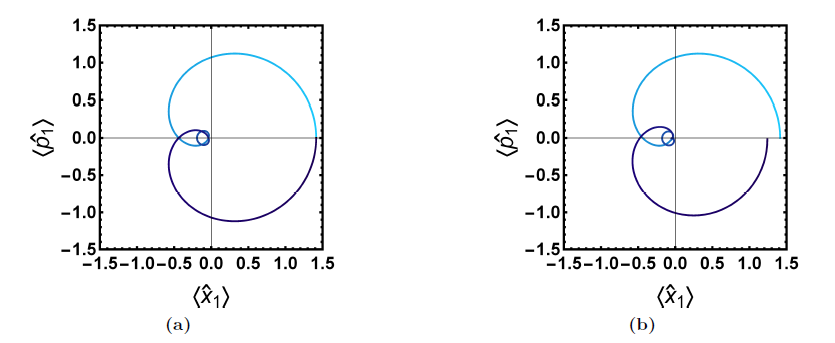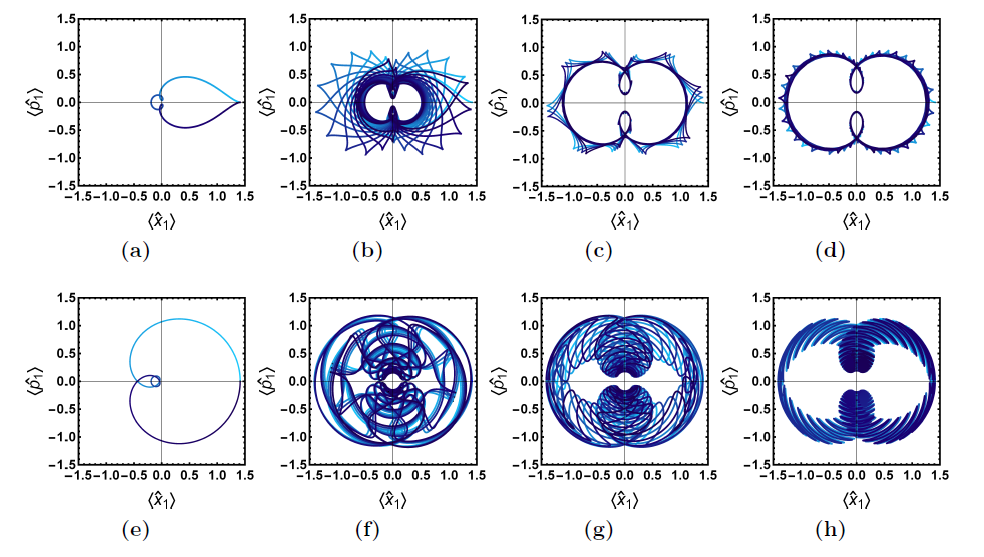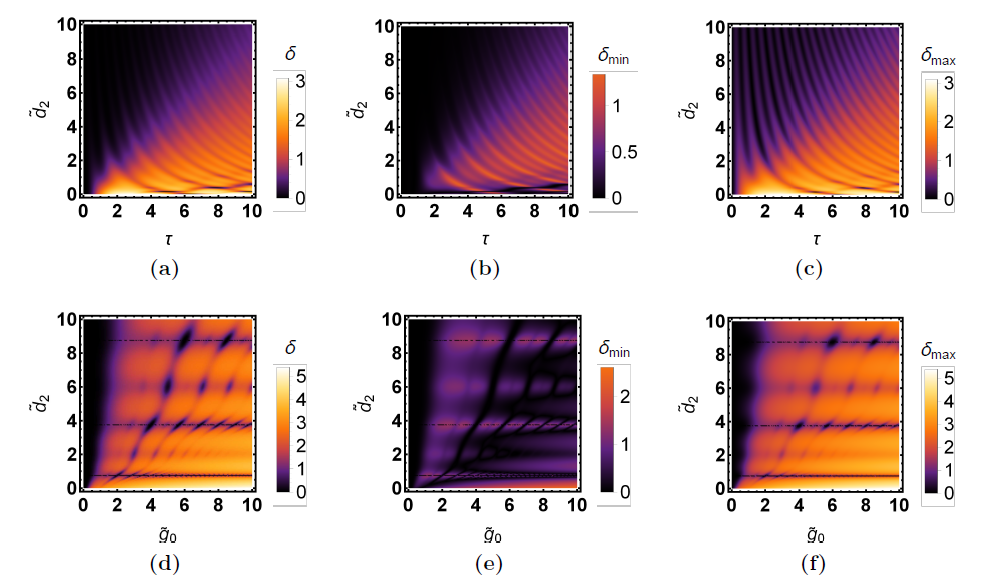Our paper titled “Time-evolution of nonlinear optomechanical systems: Interplay of mechanical squeezing and non-Gaussianity” has just been accepted for publication in Journal of Physics A: Theoretical and Mathematical. Here’s a short (technical) summary of the main results.
The main result in this paper is the solution of a nonlinear optomechanical system with time-dependent interaction terms and time-dependent mechanical displacement and squeezing terms. With this solution, it is possible to model all kinds of different effects, and one major application is sensing. In fact, we use this solution in another hitherto unpublished work titled: “Optimal estimation with quantum optomechanical systems in the nonlinear regime”. This paper also turned out to be the central result that I built my PhD thesis around.
But back to this paper. Let me sketch out the intuition behind the methods we used to solve the dynamics. First, we divide the dynamics into a quadratic contribution and a non-quadratic contribution, through a method similar to the interaction picture (treating the non-quadratic contribution as the perturbation). Why? Because we can model the evolution induced by the quadratic part on the non-quadratic with a Bogoliubov transformation. That way, we are able to consider the two contributions separately, while still taking into account their interplay.
Next, we solve the non-quadratic contribution (consisting in our case of the linear displacement term and the nonlinear interaction term) with a Lie algebra method. This method maps the problem from solving an operator-valued differential equation (the Schördinger equation) to solving a set of scalar differential equations. The advantage to this is that even if the differential equations cannot be analytically solved, they can often be solved numerically. In comparison, it’s much harder to solve a differential equation of operators, since you often have to model them in a truncated Hilbert space, which can introduce errors.

Once the solution of a nonlinear optomechanical system is known, one can study aspects of the system, such as its evolution in phase space, similar to in the previous figure. But this time, we add mechanical squeezing into the mixture. The following figure shows the optical quadratures of an optomechanical system for increased squeezing values.

Another property of the state is its non-Gaussianity, which is something that we can only study once the full nonlinear evolution of the system is solved (the reason being that linearised dynamics always map initially Gaussian states to Gaussian states). This is the main application of the solution in this paper.
We are specifically interested in how the mechanical squeezing influences the non-Gaussianity. We find that when a constant squeezing is applied, the non-Gaussianity decreases. The reason for this decrease is that a large Gaussian addition to the dynamics dominates, which makes the final states more Gaussian. However, if a time-dependent squeezing is applied on parametric resonance (twice the mechanical frequency), then the non-Gaussianity increases.

The results could potentially have implications for sensing: If your sensing application requires a highly non-Gaussian state, then adding dynamical squeezing probably isn’t a good idea. As far as I know though, the relationship between non-Gaussianity and, for example, the quantum Fisher information is not fully known (something I want to work on in the future).
This paper is by far the longest work I have published to date, and took a long time to get right (we probably had enough material to write another small paper alongside it). I worked hard to make it readable despite its length and I hope that the points presenting here make the case for delving deeper into the mathematics. I also hope that it provides a good introduction to the mathematical aspects of nonlinear optomechanics.
For related results, we had a look at the influence of a time-dependent optomechanical coupling on the non-Gaussianity in this paper titled: “Enhanced continuous generation of non-Gaussianity through optomechanical modulation“.
